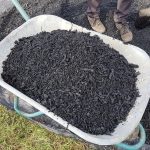Nutrient deficiencies and their symptoms
Optimizing plant nutrition is a fundamental aspect of successful crop production. Nutrient deficiencies can significantly impact crop health and productivity, leading to reduced yields and compromised plant defenses against diseases and pests.
How to identify nutrient deficiencies in plants? How do nutrient imbalances affect plant health? What are the common symptoms of nutrient deficiencies in crops? In this article, we’ll explore these questions and more.
What are nutrient deficiencies?
Nutrient deficiencies in plants refer to the lack or insufficient availability of essential elements required for their healthy growth and development. Plants, like all living organisms, have specific nutritional needs to carry out vital functions, including photosynthesis, respiration, and reproduction. When a plant lacks one or more essential nutrients, it cannot perform these functions optimally, leading to visible symptoms that indicate a deficiency.
Common symptoms include yellowing or discoloration of leaves, stunted growth, leaf curling, and poor fruit development. Nutrient deficiencies can result from various factors, such as poor soil nutrition, imbalanced fertilization, inadequate soil pH levels, or other environmental stresses.
Accurate identification of nutrient deficiencies is important for effective management, as it allows growers to implement appropriate measures like targeted fertilization, soil amendments, and pH adjustments to restore the plant’s nutrient balance and ensure its overall health and productivity.
Hidden deficiencies
However, not all nutrient deficiencies in plants exhibit visible symptoms. Some deficiencies can be “hidden”, meaning they do not manifest apparent visual signs, especially in the early stages. During the initial phases of nutrient deficiencies, there might not be any visible signs of stress or deficiency. However, over time, the lack of essential nutrients can impact crop yield and quality, even without apparent symptoms.
To address hidden nutrient deficiencies and prevent more severe imbalances, regular soil testing and plant tissue analysis are crucial. Monitoring nutrient levels in the soil and plant tissues allows growers to take proactive measures and apply targeted fertilization, ensuring that plants receive the nutrients they need for optimal health and productivity, even before visible symptoms appear.
Detecting and addressing hidden deficiencies promptly can help prevent potential yield losses and ensure the long-term vitality of the crop.
What causes nutrient deficiencies?
Nutrient deficiencies in plants are influenced by various factors, including soil conditions, climate, and agricultural practices. Some common causes include:
Poor Soil Nutrition: Inadequate nutrient levels in the soil due to natural soil properties, erosion, or nutrient depletion from repeated cropping without proper replenishment.
Imbalanced Fertilization: Overlooking the crop’s comprehensive nutrient requirements in conjunction with soil and water composition could lead to either insufficient or excessive application of specific nutrients
Soil pH: Extremes in soil pH, either highly acidic or alkaline, can affect nutrient availability and uptake by plants.
Soil Compaction: Compacted soils restrict root growth and nutrient uptake, leading to deficiencies.
Excessive Leaching: Excessive rainfall or over-irrigation can wash away nutrients from the root zone, particularly in sandy soils.
Poor Root Health: Root diseases or poor root development can hinder nutrient absorption by the plant.
Common Nutrient Deficiencies and Their Symptoms
Nitrogen (N) Deficiency:
Symptoms: Uniform yellowing of older leaves (chlorosis) starts from the leaf tips and progresses inwards. Leaves may appear pale green or yellowish, while veins maintain relative greenness. Stunted growth and reduced leaf size are also common indications.
Causes:
- Leaching and Runoff: Excessive rainfall or over-irrigation can cause nitrogen to leach deep into the soil or wash away through runoff, especially in sandy soils or poorly drained areas.
- Inadequate nitrogen levels in the soil
- Unbalanced fertilization
.
Phosphorus (P) Deficiency:
Symptoms: Leaves exhibit a dark green color with a reddish or purple tint, particularly noticeable in younger leaves. Plants may demonstrate limited growth and underdeveloped root systems.
Common causes:
- Low Soil Phosphorus Content
- High or low soil pH: In acidic soils (low pH), phosphorus tends to bind with iron and aluminum, reducing its solubility and making it less accessible to plant roots. On the other hand, in alkaline soils (high pH), phosphorus can become fixed with calcium and other elements, hindering its uptake.
- Phosphorus Fixation: In certain soil types, such as clay soils, phosphorus can become tightly bound or fixed to soil particles, making it less available for plant uptake.
- Soil Compaction: Compacted soils restrict root growth and limit the ability of plant roots to explore a larger soil volume, reducing their access to phosphorus and other nutrients.
Potassium (K) Deficiency:
Symptoms: Chlorosis starts at leaf margins, gradually progressing to browning and necrosis. Leaves may display scorching, and plants could exhibit reduced drought tolerance.
Causes: Potassium deficiency is often due to low soil potassium levels, excessive leaching, or imbalanced fertilization practices.
Magnesium (Mg) Deficiency:
Symptoms: Older leaves exhibit interveinal chlorosis, wherein the tissue between the leaf veins turns yellow while the veins maintain their green color. Leaf edges may curl, and photosynthesis may be impaired.
Causes: Magnesium deficiency occurs when soil magnesium availability is low, particularly in sandy or acidic soils, or when potassium and calcium levels are excessively high.
Iron (Fe) Deficiency:
Common symptoms: Younger leaves display interveinal chlorosis, with the veins retaining their green color. Severely affected leaves may almost turn white.
Causes: Iron deficiency arises from poor iron solubility in alkaline soils or high phosphorus levels, which can limit iron uptake by plants.
Zinc (Zn) Deficiency:
Common symptoms: Leaves may become smaller, exhibit interveinal chlorosis, and curl upwards. A characteristic “rosetting” appearance may develop.
Causes: Zinc deficiency can arise in alkaline soils with high pH levels, as zinc availability is reduced under such conditions. Additionally, soils with low organic matter or high phosphorus content can hinder zinc uptake by plants. Cold and wet conditions can also limit the root’s ability to take up zinc effectively, leading to deficiency symptoms.
Boron (B) Deficiency:
Common deficiency symptoms: Boron deficiency in plants typically appears as distorted or misshapen new leaves and growing points. The affected leaves may become thickened, brittle, and exhibit a “witch’s broom” appearance. In certain crops, such as cauliflower and broccoli, the developing curds or heads may have hollow centers. Additionally, boron deficiency can cause abnormal flower development, leading to reduced fruit set and seed production.
Causes: Boron deficiency commonly occurs in sandy, leached, or acidic soils. Soil pH above 7.5 can also hinder boron uptake by plants. Moreover, excessive rainfall or over-irrigation can leach boron from the root zone, exacerbating the deficiency. High levels of other nutrients, such as calcium, can further antagonize boron uptake, leading to deficiency symptoms.
Manganese Deficiency:
Common deficiency symptoms: Manganese deficiency results in interveinal chlorosis, similar to zinc deficiency, where the tissue between leaf veins turns yellow while the veins retain their green color. As the deficiency progresses, the chlorotic areas may turn white or gray, and leaves may exhibit necrosis or browning. Manganese-deficient plants may also show reduced leaf size and cupped or twisted leaves.
Causes: Manganese deficiency often occurs in alkaline soils or soils with a high pH, where manganese availability is limited. Furthermore, high levels of iron, aluminum, or calcium in the soil can hinder manganese uptake by plants. Soil compaction and waterlogged conditions can also exacerbate manganese deficiency symptoms by restricting root growth and nutrient uptake.
Prevention and Treatment
Preventing and addressing nutrient deficiencies require proactive measures and proper nutrient management.
Soil Testing: Regular soil testing is essential to assess nutrient levels accurately and make informed decisions regarding fertilization.
Balanced Fertilization: Apply fertilizers with a balanced nutrient composition tailored to the specific crop and soil requirements.
Soil Amendments: Incorporate organic matter, compost, or other soil conditioners to improve nutrient retention and soil structure.
pH Management: Adjust soil pH to the appropriate range for optimal nutrient availability and uptake.
Targeted Fertilization: Utilize foliar sprays or fertigation to apply nutrients directly to the leaves or through the irrigation system.
Crop Rotation: Rotate crops to prevent nutrient depletion and promote nutrient cycling in the soil.
|
Nutrient |
Position of Symptoms |
Description of Symptoms |
|
Nitrogen (N) |
Lower Leaves |
Uniform yellowing of older leaves (chlorosis) from tips inward. Pale green or yellowish leaves with green veins. Stunted growth, reduced leaf size. |
|
Phosphorus (P) |
Younger Leaves |
Dark green leaves with reddish/purple tint. Limited growth, underdeveloped roots. |
|
Potassium (K) |
Lower and |
Chlorosis starts at lower leaf margins and may progress to upper leaves. Browning and necrosis. Reduced drought tolerance. |
|
Magnesium (Mg) |
Older Leaves |
Interveinal chlorosis in older leaves, green veins. Leaf curling, impaired photosynthesis. |
|
Iron (Fe) |
Younger Leaves |
Interveinal chlorosis in younger leaves, green veins. Severely affected leaves may turn almost white. |
|
Zinc (Zn) |
Younger Leaves |
Leaves become smaller, exhibit interveinal chlorosis, and curl upwards. A characteristic “rosetting” appearance may develop. |
|
Boron (B) |
New Leaves and Growing Points |
Distorted or misshapen new leaves, thickened and brittle. Abnormal flower development. |
|
Manganese (Mn) |
Younger Leaves |
Interveinal chlorosis in younger leaves, progressing to white or gray areas. Reduced leaf size, cupped or twisted leaves. |







